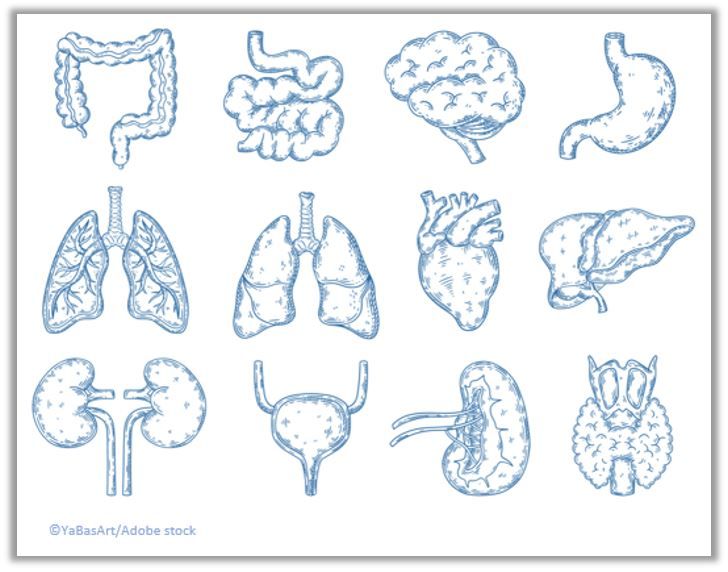- Clinical Technology
- Adult Immunization
- Hepatology
- Pediatric Immunization
- Screening
- Psychiatry
- Allergy
- Women's Health
- Cardiology
- Pediatrics
- Dermatology
- Endocrinology
- Pain Management
- Gastroenterology
- Infectious Disease
- Obesity Medicine
- Rheumatology
- Nephrology
- Neurology
- Pulmonology
Comorbidity Burden in T2D Patients Varies Widely, Becomes More Diverse Over Time
Analysis of 224 000 type 2 diabetes patients over 2 decades suggests the need for "revised care pathways" that better reflect the myriad causes of persistent morbidity.

Of the 5 most common comorbidities diagnosed in persons with type 2 diabetes (T2D), only 2 are traditionally associated with the disorder, report researchers in the United Kingdom.
Their analysis of more than 200 000 individuals with T2D showed the most common comorbidity at the point of T2D diagnosis was hypertension (age-standardized prevalence 36.8%). Ischemic heart disease, also a traditional finding in the T2D population, was common but was only the fifth most common comorbidity identified with a prevalence of 10.2%.
The remaining 3 of the top 5 conditions identified as comorbid at T2D diagnosis are not typically expected: back pain at 25.3%, depression at 15.3%, and osteoarthritis at 11.1% of the study cohort. Prevalence of all 3 increased over the course of the disease and at 10 years post-diagnosis, according to the study, more than 1 in 3 participants had back pain and 1 in 4 reported depression.
The investigators also found high rates of multimorbidity (≥2 chronic conditions) at the time of T2D diagnosis, with 30% initially presenting with ≥3 comorbidities and 60% having ≥2 chronic conditions a decade later.
Jonathan Pearson-Stuttard (Health Analytics, Lane Clark & Peacock LLP, London, UK) and colleagues believe theirs is the first study y to take "a more holistic view of comorbidities in people with T2DM and to analyse how this varies across specific sub-groups and over the course of disease."
“Building on these results could enable redefining both clinical care pathways and preventative approaches to be more patient-centred, cognisant of the vast differences in health needs and inequalities in outcomes in people with T2DM,” wrote investigators in eClinical Medicine.
“Building on these results could enable redefining both clinical care pathways and preventative approaches to be more patient-centred, cognisant of the vast differences in health needs and inequalities in outcomes in people with T2DM.”
Pearson-Stuttard and coresearchers accessed patient records in the UK Discover-Now primary care data set between 2000 and 2020, identifying 224 000 individuals living with T2D of whom approximately 45% were women and who had an approximate mean age of 60 years. The majority (41–47%) of the study population were Asian or British Asian, with about 30% being White, and about 11% Black or Black British.
At diagnosis, investigators found, approximately 55% of study participants had 1 or no comorbidity and just 5% had ≥5. At the 10-year follow-up, only 20% had 1 or no comorbid condition and the proportion with ≥5 had increased 5-fold to 25%.
The 3 most common comorbidities at diagnosis were hypertension (37%), back pain (25%), and depression (15%) and percentages were about the same 10 years later. Investigators report a remarkable rise, however, in prevalence of retinopathy which saw an almost 10-fold increase from 4.8% at diagnosis to 41.3% 10 years post-diagnosis, making it the third most common comorbidity after a decade of disease.
When they looked more specifically at the group of participants with ≥5 comorbid diseases at T2D diagnosis, all had higher prevalence of all 35 comorbidities identified, led by hypertension in 73% and followed by back pain (69%) depression (67%), asthma (45%) and osteoarthritis (36%).
Pearson-Stuttard et al found large differences in comorbidity profiles over the course of the disease based on comorbidities at diagnosis. For example, those with CVD, renal disease, obesity, or hypertension when diagnosed with T2D had much higher prevalence of the wider range of comorbidities than those without those diagnoses. Among those with and without obesity at diagnosis, rates of nonvascular comorbidities were markedly increased in the former vs the latter.
In contrast, the authors observed little difference in prevalence/profiles of comorbidities between the “most and least deprived” participants but did record increased rates of some of the less common conditions (eg, severe mental illness and chronic obstructive pulmonary disease) among those identified as deprived.
The authors observed little difference in prevalence/profiles of comorbidities between the “most and least deprived” participants but did record increased rates of some of the less common conditions (eg, severe mental illness and chronic obstructive pulmonary disease) among those identified as deprived.
Differences in prevalence of the most common comorbidities were larger between ethnic groups, according to the investigators who found at 2-fold greater prevalence of depression among White participants than among Asian people; a 2-fold greater prevalence of hypothyroidism among Asian participants compared with those identified as Black; and significantly increased rates of severe mental illness, cancer, stroke, and chronic kidney disease among Black vs Asian participants.
Summarizing their hopes for their findings and future investigation, they write: “Care pathways and preventative measures for people with T2DM should transition to reflect the increasing and diverse set of diseases driving persistent morbidity. This more holistic approach would benefit patients, reduce inequalities in morbidity in this patient group and reduce acute demand on healthcare systems.”
Reference: Pearson-Stuttard J, Holloway S, Polya R, et al. Variations in comorbidity burden in people with type 2 diabetes over disease duration: A population-based analysis of real world evidence. eClinicalMedicine. 2022;52:101584. doi: https://doi.org/10.1016/j.eclinm.2022.101584
